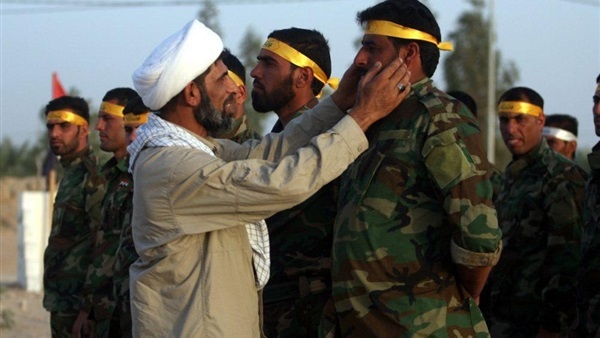Looking forward to the Global Terrorism Index 2019
Monday 24/December/2018 - 01:05 PM

Jassem Mohammed Bon
The world saw a marked decline in terrorist operations in
2018 following ISIS’s loss of its strongholds in Syria and Iraq, according the
Institute for Economics & Peace’s Global Terrorism Index 2018; however,
observers have noted that terrorist groups are operating in a wider area,
extending to Southeast Asia, South Asia and West Africa.

Meanwhile, terrorist attacks in Europe in 2018 were centered on stabbings and vehicular attacks, perhaps due to efforts by European countries to adopt more aggressive anti-terrorism plans and policies. However, criticism has also been directed at Europe for not adopting policies and applied programs with clear results in the fight against extremism, the ideologies or which are growing.

Syria and Iraq
As for the scene in Syria and Iraq, ISIS is still confined to limited areas, concentrated in a pocket east of the Euphrates and the border town of Qaim. According to Iraqi intelligence reports, the number of ISIS elements in Iraq and Syria does not exceed 5,000.

Idlib
Idlib remains the last resort for extremist groups other than ISIS, headed by Tahrir al-Sham, formerly known as Nusra Front.
The challenge remains in Idlib because of the intersection of interests of the regional and international political parties there, most notably Turkey, Russia, the United States, and Iran. Foreign fighters in Idlib represent a concern for European countries. Europe’s approach was to find a political outlet in Idlib without launching military operations, so as to prevent a new influx of refugees and perhaps the repatriation of foreign fighters.

Afghanistan
Afghanistan remained the bloodiest arena in 2018. There is a race between ISIS on the one hand and al-Qaeda and the Taliban on the other to carry out terrorist operations in order to impose their presence on the jihadist stage.

Libya
The scene could be relatively different in Libya in the wake of the expulsion of ISIS from its strongholds in Sirte in 2018, but political chaos has made the terrorism scene unstable this year. Despite the efforts of Khalifa Haftar’s Libyan National Army to clear some Libyan cities from militias and extremist groups, especially ISIS in Africa, which will remain effective and will take the desert, mountains and border areas to initiate their operations.

Egypt
In 2018, Egypt made clear efforts to combat extremist groups in Sinai, having implemented military operations to eliminate the hideouts of extremist groups, as well as adopting a new strategy to tackle terrorism and curb extremism through sustainable development programs in Sinai and the rest of Egypt.

West Africa
West Africa is a breeding ground for extremist groups, such as the pro-ISIS Boko Haram, and can be described as a safe haven for ISIS elements, perhaps at the level of leadership, after the organization lost its strongholds in Syria, Iraq and parts of Libya.

Somalia
Somalia is not far from the scene of extremist groups, with the pro-ISIS Shabaab Movement carrying out terrorist operations in East Africa. Meanwhile, Somalia is also a safe haven for al-Qaeda in Yemen, threatening the Horn of Africa and maritime routes, despite the efforts of the Arab coalition to fight the Houthi militias in Yemen.
Forward reading of the Terrorism Index in 2019
It is expected that ISIS will grow in Iraq, especially in the western region and the city of Mosul. The reasons for the return of ISIS activity include the political chaos in Iraq, the Iranian and US intervention in Iraq, the Iraqi government’s lack of any strategies or plans for the return of displaced persons, and not implementing plans to curb terrorism and extremism, most importantly the reconstruction of cities that have been subjected to terrorism, the adoption of sustainable development and the elimination of unemployment.
As for Syria, it would seem the plan is to leave a pocket for ISIS in Syria with the support of Turkey, the United States and Russia to serve as a pressure card on Bashar al-Assad's regime and possibly as a substitute for the Kurdish security forces in northern Syria.
Europe remains in the eyes of ISIS and other extremist groups in 2019, with operations expected to be of a general pattern, such as the stabbings and vehicular attacks of 2018, although a significant decline in propaganda on the internet and through social media is also expected.
Meanwhile, Afghanistan is expected to be a hotspot throughout 2019, with ISIS escalating operations more than al-Qaeda and the Taliban against soft civilian targets. Some of the leadership of ISIS and al-Qaeda may perhaps transfer from Iraq, Syria, Libya and Sinai to Afghanistan. This idea is supported by the presence of US and international forces there. Also, conflicting international policies, most notably from Russia and Turkey, make a political solution in Afghanistan complex in 2019.
Afghanistan remains the most vulnerable to terrorist operations in 2019, with limited operations such as hit-and-run attacks in Iraq, defensive attacks and pockets in Syria, and lone wolves carrying out very limited operations in Europe.
In general, ISIS is expected to witness a decline in Sinai and Libya while growing more in West Africa and in Somalia in East Africa.





